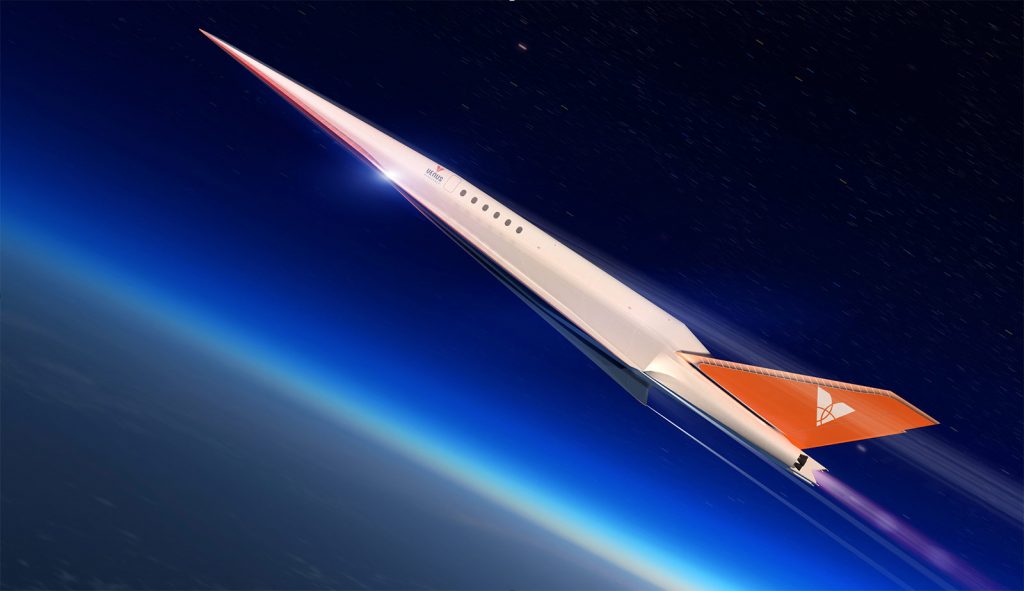“How much does the world change if you can get anywhere in an hour?”
By Eric Berger, ARS Technica
HOUSTON SPACEPORT—On a cloudy day in late March, Andrew Duggleby guided me a safe distance away from a rocket engine. We did not have to go far, maybe 50 meters, because the prototype engine designed and built by his small engineering team is not that large.
Duggleby is chief technology officer of a company he co-founded with his wife, Sassie. Venus Aerospace has the goal of building a hypersonic aircraft that can carry perhaps a dozen passengers and travel at the astonishingly fast speed of Mach 9, or more than 11,000 kilometers an hour.
“How much does the world change if you can get anywhere in an hour?” Sassie Duggleby asked me.
Going really fast
Quite a lot, probably. And I had come to Venus Aerospace’s facilities in southeastern Houston to see if there was any chance the company could meet this ambitious goal.
Certainly, I had some doubts. One problem is that Mach 9 is really, really freaking fast. No airplane has ever gone this fast. The speediest airplane ever built is Lockheed’s SR-71 “Blackbird,” which traveled at Mach 3.2. Anything above Mach 9 and you lose communications with the ground, as plasma starts enveloping the vehicle, as if it were a spacecraft returning to Earth through the upper atmosphere.
We waited for a few minutes before steam began to hiss out of the engine. And then, for a few seconds, the engine emitted a distinctive whistling sound. “There it is!” Duggleby exclaimed. By it, he meant the sound of a rotating detonation engine firing after its ignition. The sound indicated that a reaction was successfully rotating at 20,000 times a second around the engine.
In terms of passenger travel comparisons, the Concorde supersonic airliner traveled at Mach 2, or about 2,100 km/hour. Most of the newer generation of supersonic aircraft under development today are in about the same range, such as Boom Supersonic’s cruising speed of Mach 1.7
The Dugglebys are proposing a radically different flight profile. They intend for their aircraft to take off and then perform a 10-minute boost with its rocket engine. This will send the aircraft to an altitude of approximately 50 km, or half the way to space. Oh, and they’re aiming for an airport-like operational cadence of four flights a day.
To that end, the company recently decided on a fuel mix for its engine: room-temperature hydrogen peroxide and Jet-A, the fuel used by a majority of jet aircraft already flying at airports. The company’s engineers also recently achieved liquid peroxide and Jet A detonation, which is important for using a stable fuel composition.
An efficient engine
One key to making all of this work is using a new type of engine based on “rotating detonation.” Governments around the world have been researching this technology for more than a decade because it has the potential to increase fuel efficiency in a variety of applications, from US Navy ships to rocket engines.
In a traditional rocket engine, a highly pressurized propellant and an oxidizer are injected into a combustion chamber where they burn and produce a tremendously energetic exhaust plume—Newton’s second law of motion in action. A rotating detonation engine is different in that a wave of detonation travels around a circular channel. This is sustained by the injection of fuel and oxidizer and produces a shockwave that travels outward at supersonic speed.
This all sounds fairly complicated and, well, it is. But an increasing number of groups in Japan, Europe, the United States, and elsewhere have produced and tested such engines, so they are more than merely theoretical. In lab tests, the engines have provided about a 10 percent increase in fuel efficiency.
That may not sound like a whole lot, but it is a make-or-break number for Venus Aerospace. By mass, hypersonic aircraft are about 80 percent fuel and oxidizer. By increasing that fuel efficiency, there is actually mass left over for important things like landing gear, wings, and even some passengers. “It allows us to truly build a vehicle that is like an airplane,” Andrew Duggleby said.
Send in the drones
At the same time Venus Aerospace is working on its rocket engine, the company has also begun testing drones to refine the shape of its plane. Recently, a 5-foot-long drone demonstrated a fully autonomous flight in California. Venus aims to go supersonic with an 8-foot drone before the end of this year and hit Mach 3 by early 2024 with a rotating detonation engine.
The company has about 80 full-time employees and 20 contractors, the majority of whom work at the company’s hangar at the Houston Spaceport. Venus Aerospace so far has raised $41 million, led by Prime Movers Lab, and Sassie Duggleby said she is working on raising a second round of funding.
She and her husband both previously worked for Virgin Orbit before founding Venus Aerospace in the summer of 2020. They feel like it is important to have a company that both works hard, but also works reasonable hours.
“We like to say ‘Home for dinner,'” she said. “That’s both for our employees and our customers traveling around the world.”
Venus Aerospace has a very, very long way to go. But it seems to be taking the right steps at the beginning of its journey.
Original Article:
https://arstechnica.com/science/2023/04/a-passenger-aircraft-that-flies-around-the-world-at-mach-9-sure-why-not/

